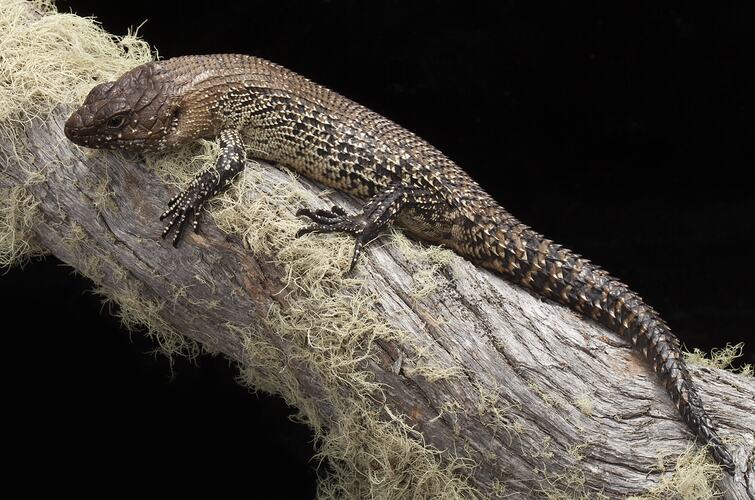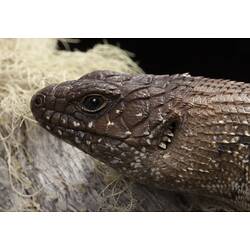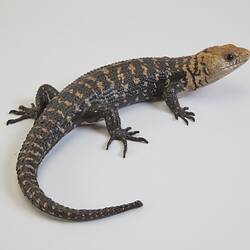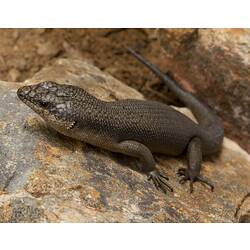General Description
Large spiny lizard with long tail and robust limbs (all with five digits). Most pronounced scales are on the tail. Pattern and colour very variable from dark brown to almost black with no patterns, or flecks or blotches or narrow bands. Snout to base of tail length up to 20 cm.
Biology
A diurnal (ie. active during the day) species that lives in large social groups. When threatened they will take cover in a hollow log, under bark or between rocks. They poke their heads carefully out from cracks in the rocks to warm up and are seen by day basking on rocks and logs, but usually retreats when approached. If harassed further it will inhale air, making its body swell up - this increased size, combined with the spiky keeled scales, makes it difficult for a predator to dislodge the lizard from its hiding place. It feeds on a variety of invertebrates such as insects, snails and slugs, as well as vegetation such as fruit and leaves. Females give birth to live young, usually producing litters of four to six.
Distribution
South-eastern Australia along the slopes and ranges of the Great Dividing Range. There is an isolated population in Mt Lofty Ranges, South Australia.
Habitat
Rock crevices or under large slabs of rock throughout its range, and sometimes inhabits hollow logs and tree stumps.
More Information
-
Animal Type
-
Animal SubType
-
Brief Id
A large, reddish brown skink with spiny scales on the neck, back and tail.
-
Colours
Black, Brown
-
Maximum Size
20 cm
-
Habitats
-
Diet
Omnivore
-
Endemicity
-
Commercial
No
-
Conservation Statuses
CITES: Not listed, FFG Threatened List: Not listed, EPBC Act 1999: Not listed, IUCN Red List: Least Concern
-
Taxon Name
-
Scientific Author
(Gray, 1832)
-
Common Name
Cunningham's Skink
-
Kingdom
-
Phylum
-
Subphylum
-
Class
-
Subclass
-
Order
-
Suborder
-
Infraorder
-
Family
-
Genus
-
Species Name
cunninghami






